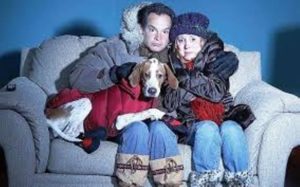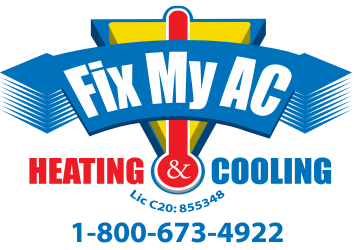Do I Need My Furnace Serviced?

The answer is YES…. you should have your Furnace serviced annuall. Give us a call 1-800-673-4922
Replace or clean your furnace filter. You should replace or clean your furnace filter(s) three or four times yearly. This is a quick, easy job every homeowner or tenant can do. A new filter makes your furnace more energy-efficient and saves money, too.
A furnace that is not running at peak performance can be deadly. Carbon Monoxide is a natural product of incomplete combustion. Virtually every gas furnace produces some Carbon Monoxide, which is usually carried away from your home through the furnace’s venting. A clean, efficiently burning gas furnace produces very small amounts of carbon monoxide, while a dirty, inefficiently burning one can produce deadly amounts. Carbon Monoxide is odorless and colorless. It causes flu-like symptoms, disorientation, confusion, and even death.
It is highly recommended that you have your furnace cleaned and checked every year. The older the furnace, the more important this service is. Newer gas furnaces are equipped with many features that shut the furnace off when a problem is detected. Older furnaces have no such devices. Over time, furnaces can develop small cracks in the combustion chamber. These cracks may not be visible to the naked eye. It is through these cracks that Carbon Monoxide can leak into your home.
It is also important to change your furnace filter regularly. The filter usually is found just inside the front cover of the furnace. It may have its own access door on the front of the furnace. A clean filter will help your furnace burn more efficiently, and will help keep dust from being circulated through your home.
- Keep the area around your furnace clean and unobstructed.
- Keep the burner area of your furnace clean.
- Furnaces that require lubrication on the motors and bearings should be attended to by a qualified heating technician once a year.
- Do not have anything combustible within six inches of your vent pipe.
- Do not close off more than 20% of the registers in your house. This can cause high resistance and unnecessary heat build up in the furnace.
- Do not store combustible material such as paint thinners, gasoline, etc. near your furnace.
Scale: Flakes of rust, produced by the by-products of burning gas (carbon dioxide and water vapor). Scale may fall on the burners and impede gas flow. Over time, it can damage your furnace by harboring moisture, thereby fostering rust on a large scale. The solution: Your service technician can take out the burners and clean them. You can clean out excess rust flakes that fall to the bottom of the furnace housing.
Grinding, chattering sounds from relays (signifying electrical problems), a burner that huffs and puffs, banging (delayed ignition), or clunking and bumping (cracked belt passing over pulleys)? The solution: A good rule of thumb: if it’s an unusual noise, it’s a problem. Unless you’re completely comfortable with changing a relay or a belt, call your service technician.
Carbon Monoxide: It’s colorless, odorless and tasteless, and it can kill you if it’s concentrated enough. It is caused by a lack of oxygen or a disruption of the fuel-burning process. The solutions: Your furnace breathes, just like you. Provide adequate ventilation to the unit and consider installing a fresh-air (combustion) intake. Use carbon monoxide detectors, combined with routine maintenance checks by qualified service technicians (mark them on your calendar).
Yellow Flame: That flame should be sharp and blue, clean and stable, burning as purely as possible. A yellow flame indicates dirt in the burner, which prevents it from mixing the gas and air properly. The solution: Call your technician to thoroughly test the system and clean it.
Dusty Smell: You turn up the thermostat and within minutes, your home is filled with a dry, dusty smell. The solutions: 1) Don’t worry; it’s just burning the dust out of the combustion chamber. Change your filter . 2) If it’s a constant odor, call your technician. 3) If it smells like gas, call your utility company.
Backdrafting/Negative Pressure: Negative pressure results when you take air out of the house by using oxygen faster than air can enter the house. Backdrafting is a natural consequence of negative pressure; air rushes into the house through the chimney, effectively choking off the natural process of venting. The solution: Run a combustible air duct to the unit from the outside.
Beware of Carbon Monoxide Poisoning
A clean, efficiently running gas furnace provides safe, economical heat. A gas furnace that is not running at peak performance can be deadly. Carbon Monoxide is a natural product of incomplete combustion. That includes wood, kerosene, gasoline, oil, propane, or natural gas. Virtually every gas furnace produces some Carbon Monoxide, which is usually carried away from your home through the furnace’s venting. A clean, efficiently burning gas furnace produces very small amounts of carbon monoxide, while a dirty, inefficiently burning one can produce deadly amounts.
CO is a toxic, tasteless, colorless, and odorless gas. Even small amounts can cause severe illness and even death. Symptoms include headaches, dizziness, faintness, drowsiness, pain in the ears, or seeing spots. Many people often mistake CO symptoms for the flu. If you or any of your family members are experiencing flu-like symptoms that seem to disappear when you leave your home, have your furnace checked immediately. If you suspect a carbon monoxide problem, open the windows and leave the home at once.
How to survive without heat
Fireplace or Wood Burning Stove: Remove all obstructions from the fireplace and flue before you start a fire. Burn only well seasoned wood. Do not start a fire with highly combustible fuels such as lighter fluid or gasoline. Charcoal and other coal products can give off toxic fumes and should not be used. Remember to also have proper ventilation because the fire is using up oxygen. Always use a fireplace screen to keep sparks from flying into the room. And keep the damper open when a fire is burning, as well as when a fire is dying out.
Stay Elsewhere: If your heating equipment will be out of service for an extended period of time, you might want to consider staying with family or friends or in a hotel/motel, particularly if there are infants or elderly people in your household. Find a friend to take your pets in and care for them.
Never Use Your Gas Oven for Heating: Prolonged use of the open oven in a closed house burns oxygen, thereby causing improper combustion of gas, which creates a lethal carbon monoxide gas.
